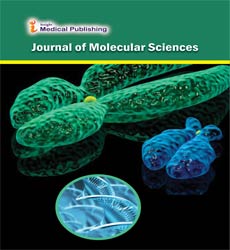Molecular Pathology is an Emerging Field within Pathology
Marie Cavuoto Petrizzo*
Donald and Barbara Zucker School of Medicine at Hofstra/Northwell, Hofstra University, Hempstead, New York
*Corresponding Author:Marie Cavuoto Petrizzo
Donald and Barbara Zucker School of Medicine at Hofstra/Northwell, Hofstra University, Hempstead, New York
E-mail:Marie.C.Petrizzo@hofstra.edu
Received date:November 06, 2021; Accepted date: November 18, 2021; Published date: November 25, 2021
Citation:Marie Cavuoto (2021) Scientific and Technological Advances in Modern day Pathology. J Mol Sci 5: e005.
Copyright: © 2021 Marie Cavuoto. This is an open-access article distributed under the terms of the Creative Commons Attribution License, whichpermits unrestricted use, distribution, and reproduction in any medium, provided the original author and source are credited
Introduction
Molecular pathology is an emerging field within pathologywhich is targeted in the study and prognosis of disorder thru theexam of molecules within organs, tissues or physical fluids.Molecular pathology shares some factors of exercise with bothanatomic pathology and medical pathology, molecular biology,biochemistry, proteomics and genetics, and is on occasionconsidered a "crossover" field. It miles multi-disciplinary innature and focuses in particular at the sub-microscopiccomponents of ailment. A key attention is that greater correctdiagnosis is feasible whilst the prognosis is based totally on eachthe morphologic modifications in tissues(conventional anatomicpathology) and on molecular checking out. The MolecularPathology resource guide is one among four CAP aid guides thatbrings a collected set of assets together in one vicinity which aretargeted on a particular hot-topic generation crucial topathologists. Every complete guide highlights present dayresources which includes a curated set of magazine articles, andan accrued set of CAP resources that consists of studyingopportunities, skill ability checking out, and accreditationassociated with this generation. Also, each resource guideincludes an “Insights from Adopters” phase to benefit anglefrom pathology leaders within the field. In sum, each aid manualgives a one-prevent useful resource as a way to help busypathologists to find precious facts approximately a dynamic andcrucial emerging technology. The Molecular basis of Humandisorder provides a contemporary and complete view of themolecular basis and mechanisms of human ailment. Combiningtypical concepts with broader theoretical standards and withcontributions from a group of professionals, the e-book looksinto sickness strategies in the context of conventional pathologyand their implications for translational molecular medication. Italso discusses standards in molecular biology and genetics,recent scientific and technological advances in modern-daypathology, the concept of ""molecular pathogenesis"" ofailment, and the way sickness evolves from normal cells andtissues due to perturbations in molecular pathways. The premiseof IHC is the binding of classifiedantibodies to epitopes in tissuesections on a slide and the detection of the colored responseproduct or fluorescence in tissuesections. Right here, wecomplex at the basic methodologies of IHC and IF, the challengesrelated to the laboratory practice of those techniques, and theutility of IHC or IF as a tool to identify and screen the expressionof goal epitopes in tissues in nonclinical studies. Programs of IHCas a tool to screen efficacy, become aware of tissue-primarilybased biomarkers (BMs), verify toxicity, and compare feasibleunexpected move-reactivity of bio therapeutics with human andanimal tissues could be examined. Biomarkers are characteristicbiological residences that can be detected and measured influids or tissues. In this chapter, we talk BMs of tissue injury thatcan be simply detected in histopathology tissuesections, ordifferent biological specimens, the usage of IHC, IF, ISH, ordifferent strategies. Molecular pathology represents thesoftware of the standards of basic molecular biology to theinvestigation of human disease approaches. Many geneticdiseases have now been characterized that end result from themutation of an unmarried gene or are associated with a selectedchromosomal rearrangement.
Open Access Journals
- Aquaculture & Veterinary Science
- Chemistry & Chemical Sciences
- Clinical Sciences
- Engineering
- General Science
- Genetics & Molecular Biology
- Health Care & Nursing
- Immunology & Microbiology
- Materials Science
- Mathematics & Physics
- Medical Sciences
- Neurology & Psychiatry
- Oncology & Cancer Science
- Pharmaceutical Sciences
